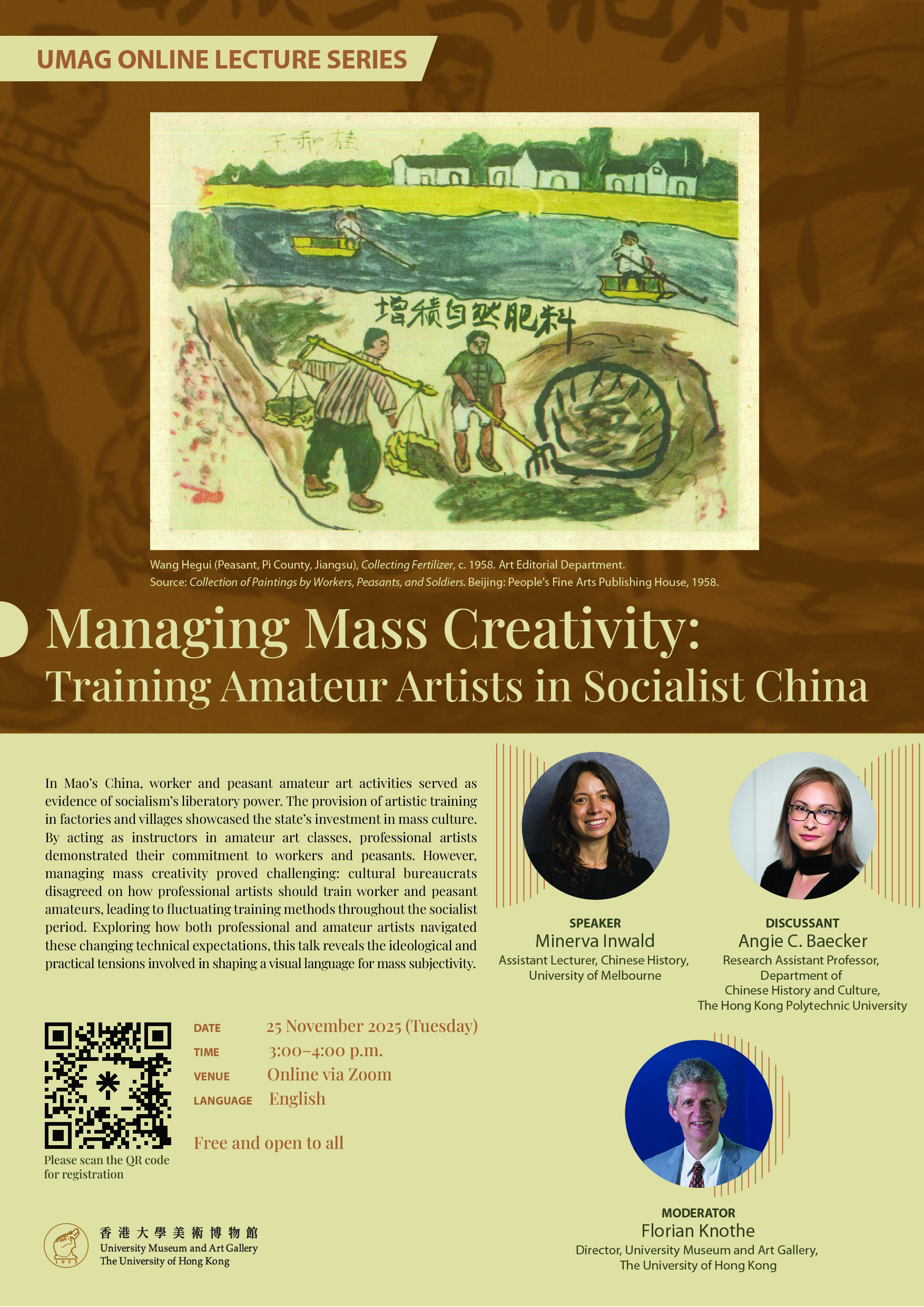Date: 25 Nov 2025 - 25 Nov 2025
In Mao’s China, worker and peasant amateur art activities served as evidence of socialism’s liberatory power. The provision of artistic training in factories and villages showcased the state’s investment in mass culture. By acting as instructors in amateur art classes, professional artists demonstrated their commitment to workers and peasants. On the ground, however, managing mass creativity proved challenging. Cultural bureaucrats did not agree on exactly how professional artists should train worker and peasant amateurs. As a result, amateur art training methods vacillated wildly across the socialist period. In some moments, professionals were encouraged to impart their academic skills to the masses, while in others, they were sternly warned that workers and peasants should only be trained in simple methods of outline and flat colour. Exploring how both professional and amateur artists negotiated their way through the fluctuating technical expectations imposed on training classes, this talk reveals the ideological and practical complications that emerged in the process of defining a visual language for mass subjectivity.
This is a part of the UMAG Online Lecture Series. For other lectures in the series, please click here.

Speaker: Minerva Inwald, Assistant Lecturer, Chinese History, University of Melbourne
Discussant: Angie C. Baecker, Research Assistant Professor, Department of Chinese History and Culture, The Hong Kong Polytechnic University
Moderator: Florian Knothe, Director, University Museum and Art Gallery, The University of Hong Kong
Speaker
Minerva Inwald is an Assistant Lecturer in Chinese History at the University of Melbourne. Her research uses the visual arts and material culture as a lens to explore modern Chinese history. Her work has been published in Modern China and the Journal of Design History. She is currently finalising her first monograph, Experts and Amateurs: Creating Artists in Mao’s China, which explores the relationship between socialist class politics and the visual arts profession in Mao’s China.
